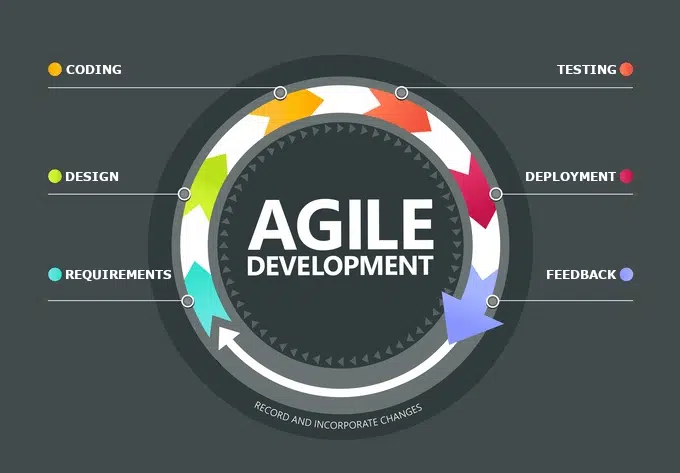Episode 3
CHANGE IS HARD
Change is so hard, doing nothing can feel like a perfectly rational decision. Unlike software, people cannot be pushed new instructions to execute (though wouldn’t that be nice?). People do not update like software.
The software development industry is forged in the fires of continuous transformation. The ideas that have allowed software to eat the world, can give us a framework to update people. Experimenting with the idea of “Agile People Development” can give organizations the extra agility that is required to stay technology relevant.
AGILE SOFTWARE DEVELOPMENT
Agile Software Development (when utilizing SCRUM methodology) is an iterative approach providing deliverables to the client in time-boxed phases known as sprints. Agile’s goal is to engage clients continuously ensuring that the defined software requirements more accurately reflect their true needs.1

Software projects can be complicated but feel like a cake walk when faced with the challenges of changing an organization’s culture. It is often better to act than be forced to react, but if change is not in the DNA of your organization how can Agile Software Development principles help?
AGILE PEOPLE DEVELOPMENT
Agile Software Development is an iterative approach; therefore, we need a system that enables iterative experimentation to test ideas and get feedback to build a better understanding of the true path for the organization.
Many of the stages in the Agile People Development model are familiar modes of work; but like life in general, the first step will feel the most painful. Getting started is the admission that what we know right now might not be what is needed to solve tomorrow’s problem. What should be done?
Let’s look at an example at MERAK, in which we had a need to formalize some internal processes, affectionately known as the MERAK playbook. We wanted a structure that exemplified a living document, driven by staff to help automate and streamline operational tasks.
The next step is gathering requirements. Activities may include brainstorming, document analysis, research, focus groups, interviews, workshops, surveys, questionnaires, etc.. The purpose should focus on understanding the environment that contains the problem and generate ideas for experimentation. For the MERAK playbook, we conducted a cultural assessment, held brainstorming sessions, structured interviews, and researched industry practices.

Experimentation is a tricky and difficult step on numerous dimensions. There is a level of ambiguity and risk involved with trying something new. Culturally, many organizations have trouble executing at this stage. The fear of making mistakes, looking incompetent, and possible failure can lead to gridlock because doing little or nothing feels like the safe option. Experimentation requires leadership to empower staff to move outside of their comfort zone and learn to fail with grace. Establishing values of curiosity and humility, while fostering a blameless culture will help focus on objectives instead of assigning blame over inevitable mistakes. At this stage of the MERAK playbook journey we experimented with role plays and internal showcase projects to test various ideas and iterate on learnings. One successful result of this approach was the Stars Bot Staff Appreciation Platform, which can be found in the portfolio on our website.
The growth phase begins when the organization discovers some nugget of truth or insight. It is imperative that this information be shared. Currently, the MERAK playbook project is at this stage, we have two core learnings: 1) focus coordination of projects on a common communication channel and 2) creating a knowledge management tool more effective than Google Search is very hard. With these learnings we have focused iterations on honing our communication governance within Azure DevOps and Microsoft Teams.
Once a practice feels complete, the organization is pulled into the newly developed practice and execution thereafter falls into a well-known domain of incremental improvement. Lastly, feedback and a system for accountability will ensure the organization is in alignment towards its objectives. For MERAK we are in the process of implementing an Objective and Key Results (OKR) system to manage our medium and long-term aspirations. 2
The process is inherently uncomfortable, but the friction of change is the process by which people update. Through adaptation and growth your organization will be well positioned to stay in the game.
- Principles behind the Agile Manifesto: https://agilemanifesto.org/principles
- Amazing Book: “Measure What Matters”, By John Doerr, 2018
Last Updated: June 25, 2025



